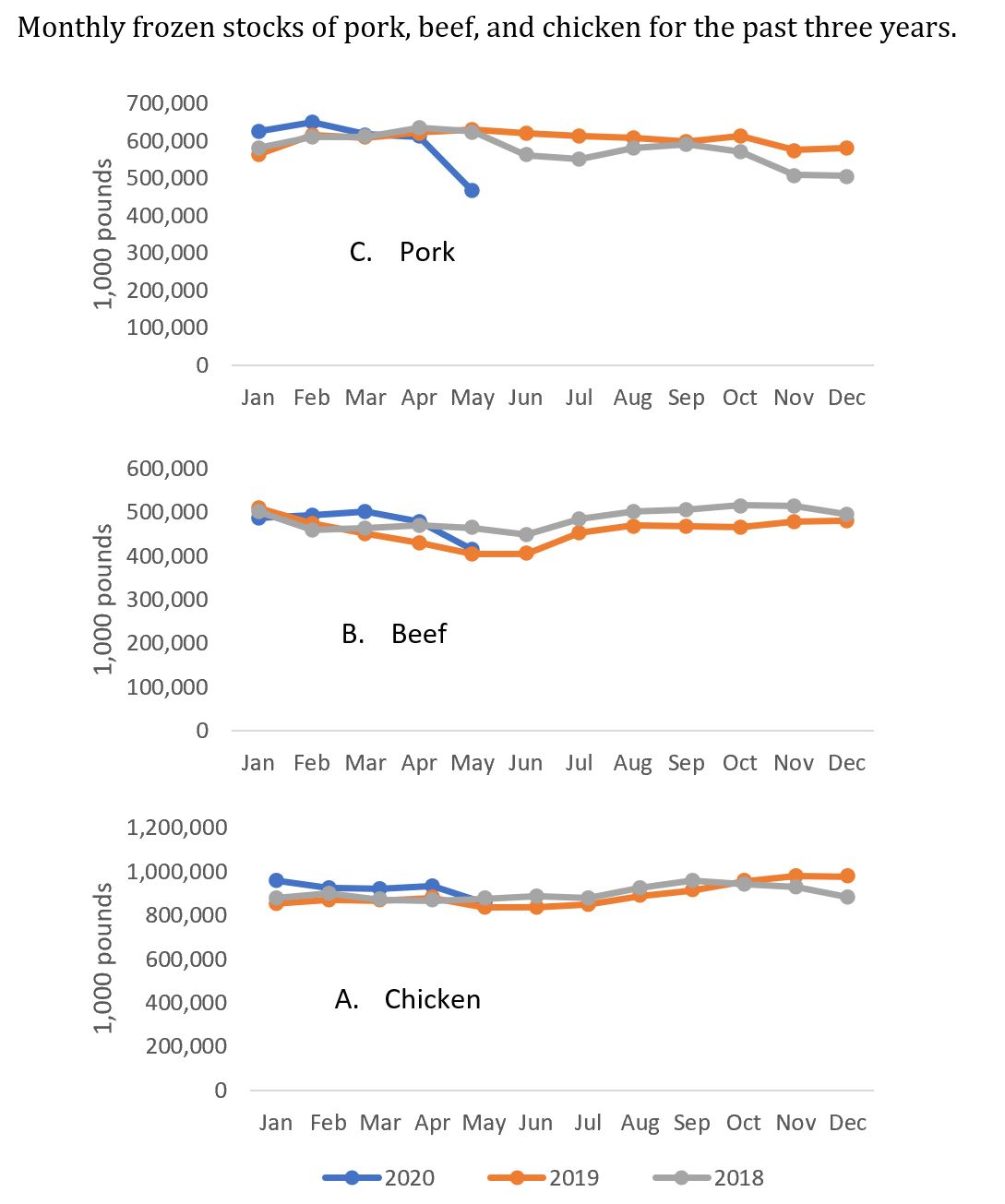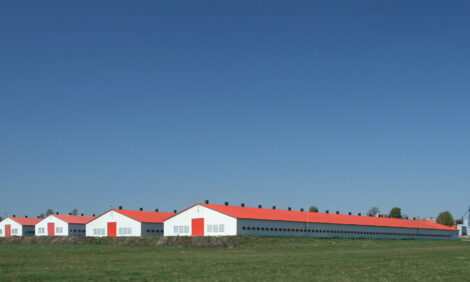



Meat processing continues to lag
Pig, poultry and beef processing continued at a lower level through May, according to recent reports released by the USDA's National Agricultural Statistics Service (NASS), but it wasn’t because of COVID-19-related closures, according to the University of Arkansas Division of Agriculture.Fast Facts:
- Frozen pork stocks at lowest level since August 2011
- Cattle processing rebounds
NASS, part of the U.S. Department of Agriculture, issued its monthly “Poultry Slaughter” and “Livestock Slaughter,” updating production data through the end of May.

“In May, chicken slaughter held up much better than might have been expected, given the disruptions in processing operations that received so much attention,” said John Anderson, head of the agricultural economics and agribusiness department of the University of Arkansas System Division of Agriculture and the Dale Bumpers College of Agricultural Food and Life Sciences.
Anderson said chicken slaughter was down 9 percent over May 2019 and down 3 percent compared to April.
“Most of the decline is actually due to the fact that May 2020 had two fewer slaughter days than May 2019, and one less than last month,” he said. The number of processing days is determined by when weekends or holidays fall during the month.
Cattle and hog slaughter were down “markedly from a year ago, even accounting for fewer slaughter days. May 2020 cattle slaughter was 23 percent lower than May 2019 and May 2020 hog slaughter was 17 percent lower than May 2019,” Anderson said. However, when compared to April 2020, beef processing made a slight rebound.
“Cattle slaughter fell more sharply than hog slaughter but stabilized more quickly,” he said.
Anderson said that the weekly data suggest that “by the time June is wrapped up, cattle and hog slaughter will likely both bewithin 5 percent or less of the prior year.”
Red Meat and Poultry in Cold Storage
Last week, USDA also released their monthly Cold Storage report. The disruption in hog slaughter discussed previously, coupled with strong demand (including exports) for pork, has led to a sharp drawing down in pork stocks.
“Stocks of frozen pork in cold storage declined by 24 percent from April and are 26 percent lower than a year ago,” he said, adding that pork stocks are at their lowest level since August 2011.
While stocks of frozen beef and chicken also declined in May, those declines were much more modest than for pork. In fact, Anderson said frozen stocks of both beef and chicken remain above 2019 levels despite the decline from April to May.


Monday’s report is part of the department’s weekly analyses of the impact of COVID-19 on the economy. See them at https://bit.ly/AR-Ag-Eco-Impacts2020.
To learn about extension and research programs in Arkansas, visit www.division.uaex.edu.









